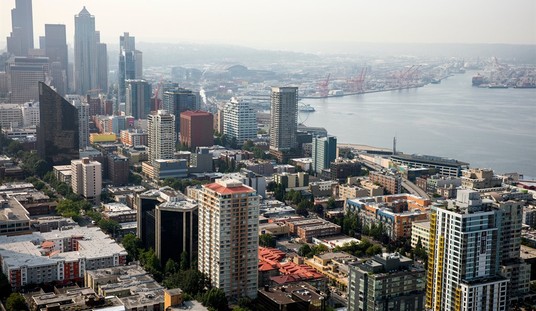While still nowhere near the highest in the nation, Minnesota has been gradually increasing their minimum wage over the past four years. Up until 2014, they had kept pace with the federal minimum wage, but they are now nearly $2.50 higher than that level. Meanwhile, their neighbors in Wisconsin have stuck with the federal minimum wage. A recent study from the University of Wisconsin has revealed the overall impact this has had. While not as severe as in places like Seattle and San Francisco, unskilled labor jobs, particularly in the restaurant industry, have been on the decline in Minnesota while similar job opportunities in the Badger State have been on the rise. (Free Beacon)
Minnesota’s minimum wage hikes have led to slower job growth in the restaurant industry and significant job losses among younger workers, a new study has found.
Noah Williams, professor of Economics and director of the Center for Research on the Wisconsin Economics at the University of Wisconsin, compared jobs and economic data in Minnesota and Wisconsin since Minnesota began increasing its minimum wage in 2014…
Those minimum wage hikes have led to slower job growth as compared to neighboring Wisconsin, particularly in the restaurant industry and among younger workers, Williams research found.
The impact has been most sharply felt by younger workers, age 24 and below. Employment in that age range has dropped an average of 9 percent (35,000 jobs) between 2014 and 2017. In Wisconsin, during the same period, youth jobs increased by 10.6 percent (43,000 jobs). In the restaurant industry specifically, more than half of their workforce is comprised of workers age 24 and younger. While the rest of the state (and the country in general) have seen significant improvements in their employment prospects since 2017, younger workers in Minnesota are lagging behind the curve.
Every one of the figures in this study points in the same direction and it’s too much to write off as coincidence. Even in a robust economy such as we’re currently enjoying, the laws of supply and demand can’t be overridden. Restaurants still exist in a highly competitive environment and their profit margins remain generally low. A sudden increase in labor costs hits their bottom line immediately so they begin reducing the workforce and/or cutting back on hours for their servers and back of the house workers.
The state is unable to artificially mandate prosperity without the free market responding to correct for the imbalance. That’s a lesson too many state and municipal governments seem painfully slow to learn.








Join the conversation as a VIP Member